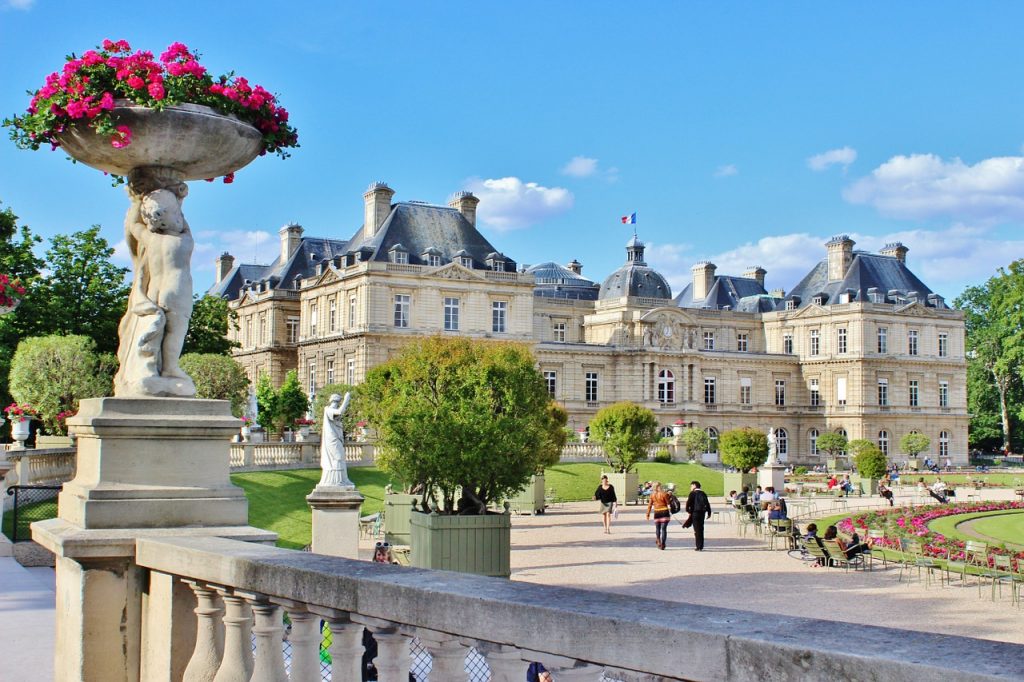
It’s hard to say which garden in Paris is the best, so let’s be careful with that term, but if you had to rank them strictly by aesthetic beauty, the Luxembourg Gardens emerge as the likely winner. It has everything a good garden should have: tree-lined promenades, ponds, statuary, fountains, a profusion of flowers in every season.
It also has that certain something extra. It could be the artificial grotto or the 17th-century palace. Of course, a dash of whimsy — a game of pétanque, a vintage carousel, a dozen tiny boats sailing across a duck pond — doesn’t hurt either.
I’ll make my case, albeit a controversial one, for why this garden is the most beautiful garden in Paris. I’ll also share practical tips for your trip to the Jardin du Luxembourg, so you can make the most of your visit, even if you find there’s another garden in Paris you love more.
1. The Jardin du Luxembourg is inspired by the world-famous Boboli Gardens.
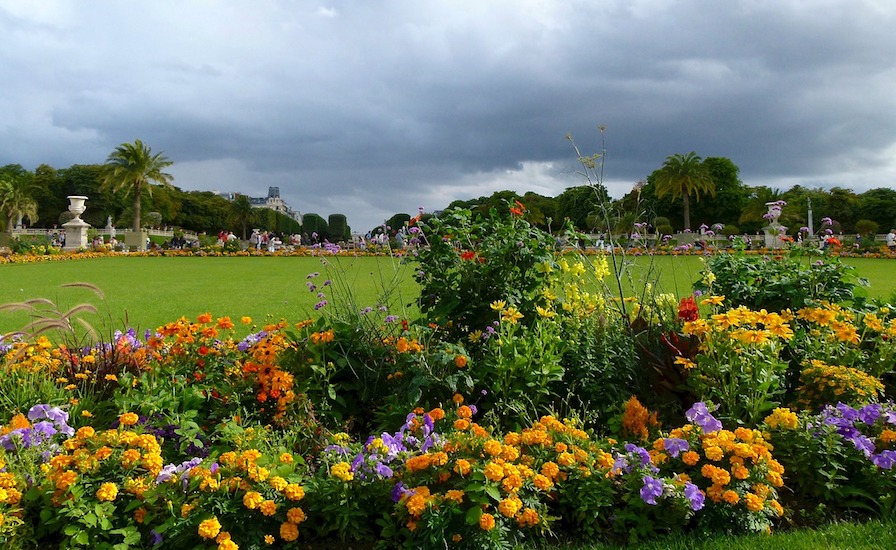
If anyone knew how to design gorgeous gardens, it was the Renaissance Italians. The Boboli Gardens are one of the top sights in Florence, drawing around a million visitors a year. Like the Luxembourg Gardens, the Boboli Gardens have a grotto (three actually), shaded walkways, symmetrical flower beds and plenty of man-made accents to complement the greenery.
The style is called Italian Baroque, and its signature focus is imposing order on nature. That’s part of the reason the Luxembourg Gardens are picture-perfect any time of year.
If you know the history, it’s not surprising these gardens have a heavy Italian influence. The French queen who ordered their creation, Marie de Medici, grew up in Florence. Recreating an Italian garden, similar to what she’d known in her childhood, was one of the first things she did after her husband, King Henry IV, was assassinated. Word is, they weren’t very close.
She began work on the grounds in 1612 after purchasing land from a duke of Luxembourg who gave the garden its name. She expanded it several years later, this time with the help of a landscape designer who’d worked on the Tuileries Gardens. It’s been updated and restored over the years, but the Italian influence remains with stone planters, terraces, parterres and more.
2. The statues are romantic.
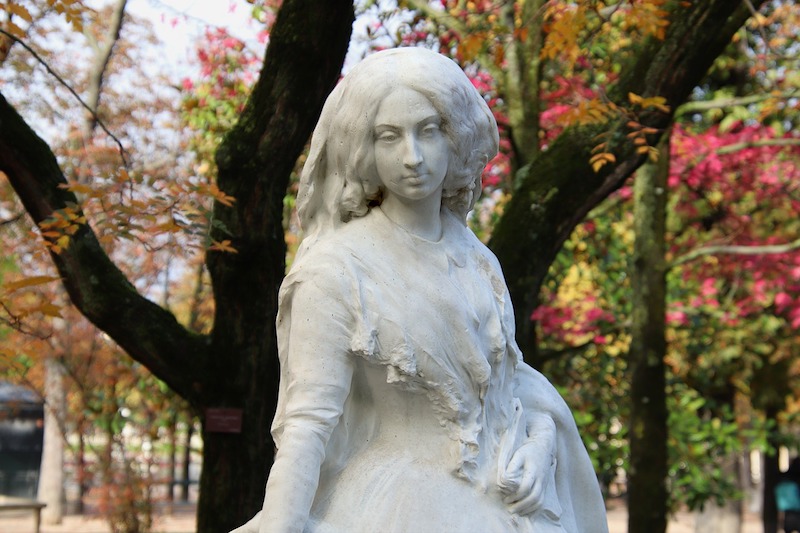
Classical statues from Roman and Greek mythology are everywhere. You’ll find Venus, the goddess Diana with a deer at her side, and Vulcan, god of fire, holding his helmet and hammer. Elsewhere, there are nymphs, cherubs, satyrs, and one weird tangle of human forms showing Silenus, foster father of the god of wine, naked and drunk, being helped onto his donkey.
Less weathered but more fully garbed, statues of several French royalty, saints, and artists survey the grounds. Look closely at the plaques and you’ll see one of these is Marie de Medici herself, carved in marble in the 1840s.
There’s another statue that will look awfully familiar if you’ve ever been to Liberty Island in New York. The Statue of Liberty, don’t forget, was a gift from France and designed by a French sculptor, so a smaller Lady Liberty looks right at home here in Paris on a pedestal surrounded by greenery.
3. It’s a whimsical garden with tiny sailboats and puppet shows.
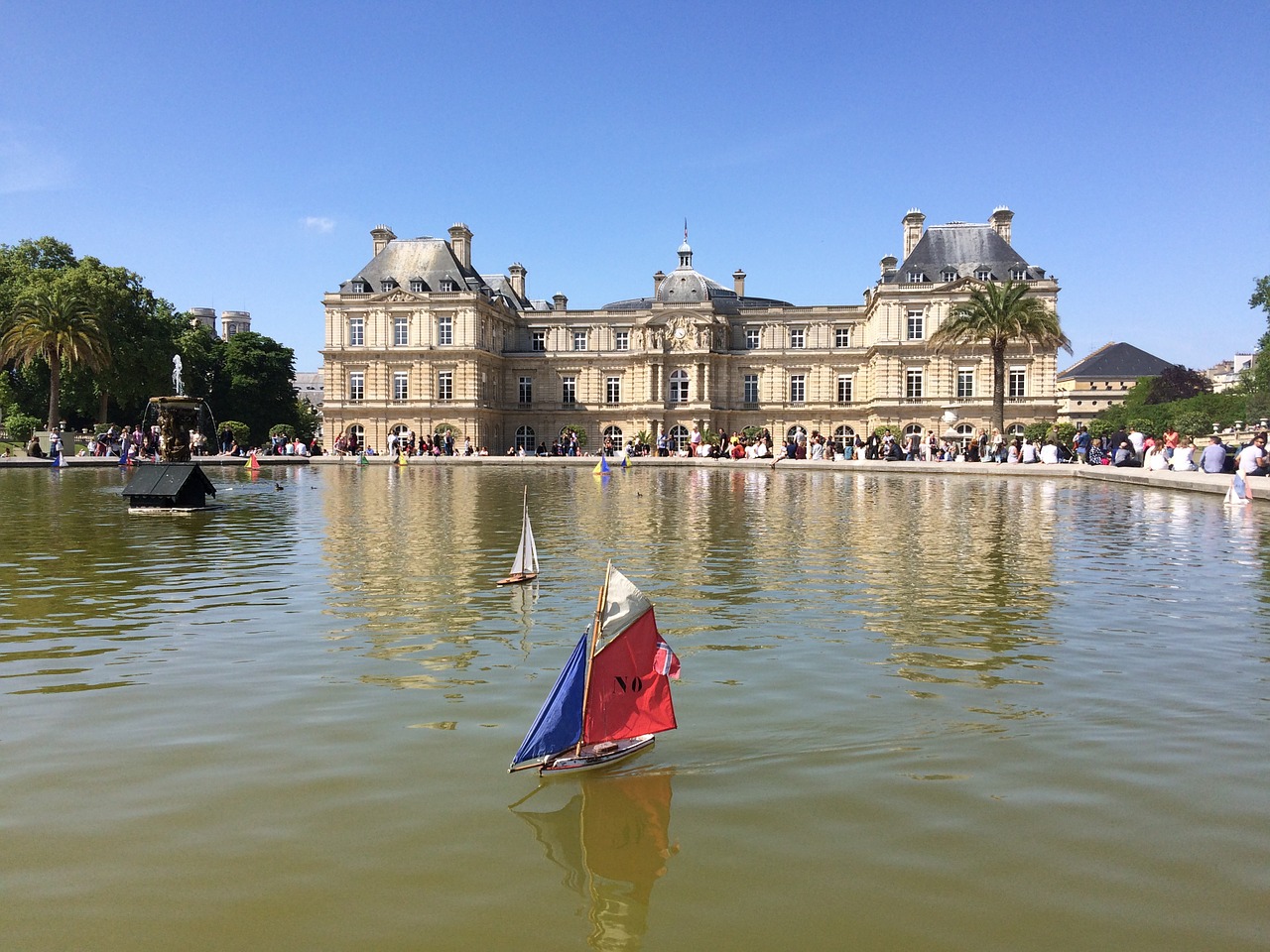
Nothing too serious here. The Luxembourg Gardens are formal and ordered, but this is very much a park for play. Locals come for the chess tables, tennis, basketball, pony rides, carousel, pétanque courts, and even occasional concerts.
You can also rent colorful toy boats and set them sailing across the pond in front of the palace, a “bateaux à voiles” tradition dating back to the 1920s. Even if you don’t want to rent a boat, it’s a great photo opp with a vintage sailboat in the foreground and the gardens and palace as your backdrop.
The Jardin du Luxembourg contains another playful treasure: the city’s largest puppet theater. Puppetry might not seem like an activity for adults, especially if you don’t speak French, but if you understand a word or two or if you just like entertainment that’s a little different from the usual, the a show at the Théâtre des Marionnettes should go on your list.
There’s a playground, too, called the Ludo Jardin. It recently reopened in 2019 and is a great place to let the kids get out some of that extra energy. The playground equipment ranges from futuristic-looking slides and forts to natural wood structures to a piece of art that doubles as a maze.
4. The Medici Fountain lends just the right touch of brooding mystery.
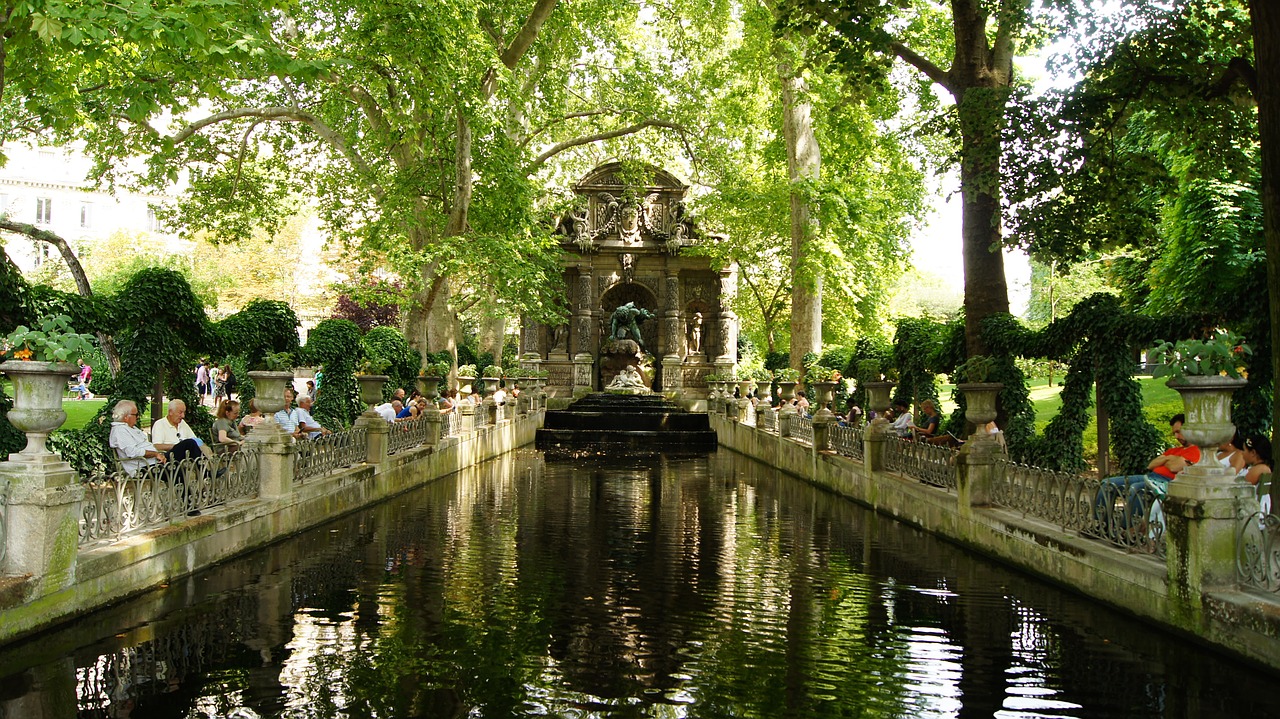
The Medici Fountain, or if you go by its full name, the Marie de Medici Fountain, is unique in Paris.
This artificial grotto — sometimes called a nymphaeum since nymphs are known to be fond of grottos — is appropriately shaded and dusky, even in summer. A long basin of water bordered by flower-filled stone urns leads toward a wall-like sculpture of mythical and allegorical figures.
The design has changed some since it was built in the 17th century, including the addition of the Fountain of Leda (“Fontaine de Leda”) which now serves at the back of the grotto. The most noticeable sculpture at the Medici Fountain depicts Polyphemus, a giant, looming somewhat menacingly over the lovers Acis and Galatea, who recline on a moss-covered dais below a rock. Between pillars on either side, a goddess (to the right) and a faun (to the left) stare thoughtfully into the middle distance.
5. It has the best lawn ornament of all: a palace.
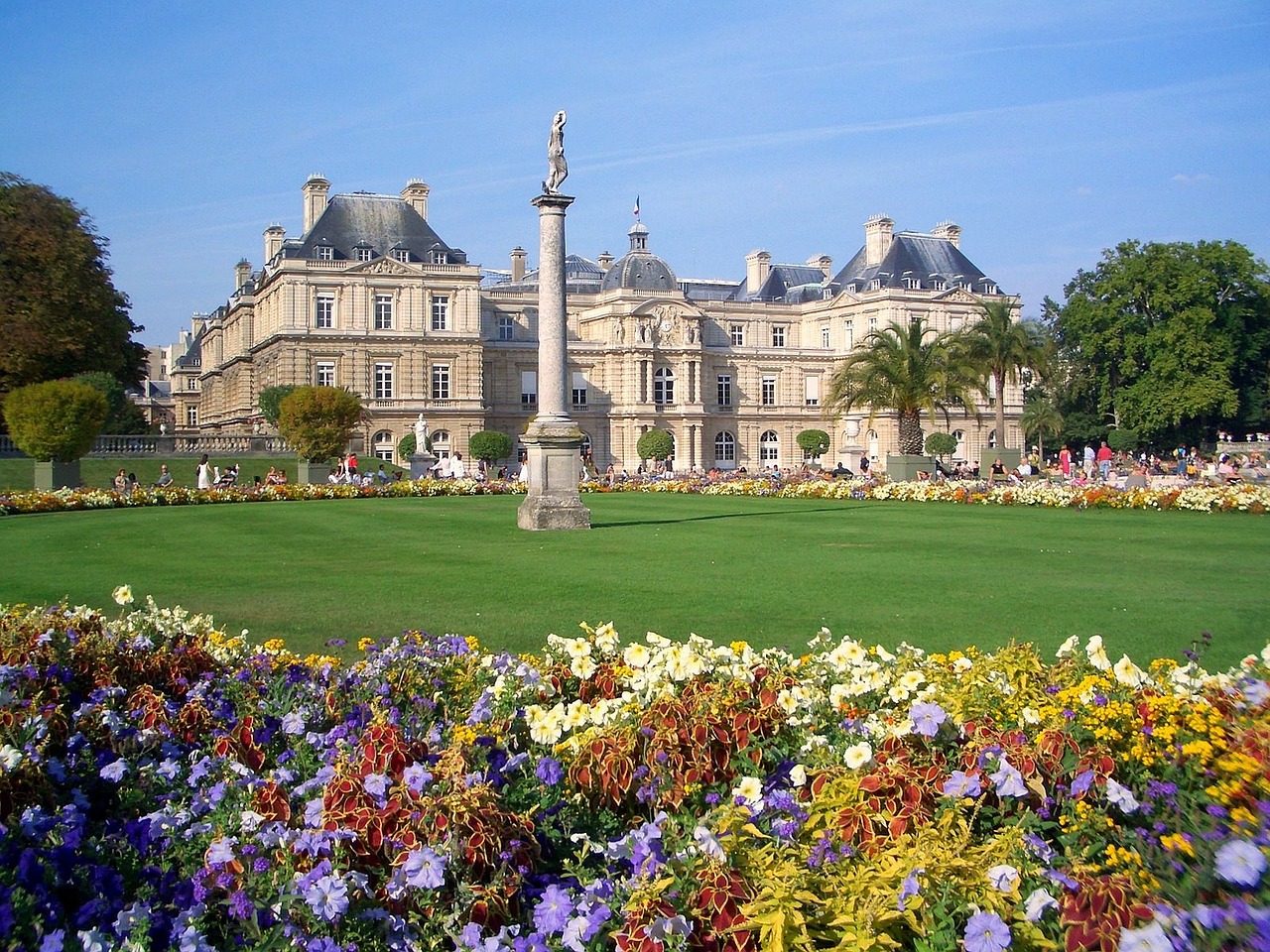
Looking quite like a country chateau in the middle of the city, the Palais de Luxembourg fits its landscape. The massive building is symmetrical and regal, built by Marie de Medici along with the gardens.
Over the years, it’s been used to house artwork and even prisoners headed to the guillotine. Today, it’s home to the French Senate. The exterior has sculptural detail on the clock face and cupola and dozens of tall windows, including in the roof. But for most tourists, it’s simply a historic centerpiece to the magnificent gardens.
The Luxembourg Gardens have other smaller buildings you shouldn’t miss. The Davioud Pavilion, designed in the 1800s, is one. Its curved balcony and strips of blue mosaics set against brick are striking. The Orangerie is another, also brick and inset with busts of French artists. This space often showcases art exhibits, usually from June through September. For even more art, the smaller Luxembourg Museum is right next door.
6. It has a bonus garden: the Jardin des Grands Explorateurs
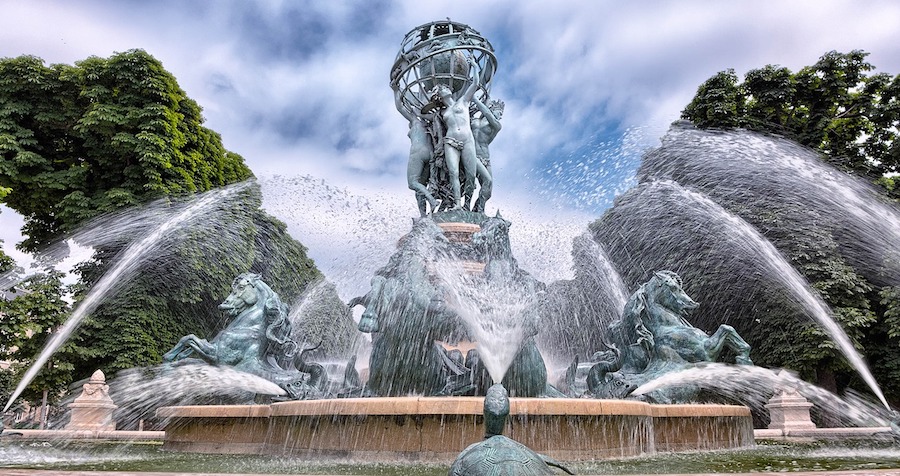
It’s not technically part of the larger garden, but the Jardin des Grands Explorateurs (translated as Garden of the Great Explorers) is attached to the Luxembourg Gardens. It extends in a thin line ending with the impressive Fontaine de l’Observatoire, or Observatory Fountain, carved with horses, turtles, dolphins and four allegorical figures supporting a globe.
This garden, while small, manages to contain two gardens, one named for Marco Polo, the other for Robert Cavelier de la Salle, both explorers. While not as grand as the Luxembourg Gardens, it’s quieter here, still with plenty of statues and flowers for a pleasant stroll.
7. The Luxembourg Gardens are the largest in Paris.
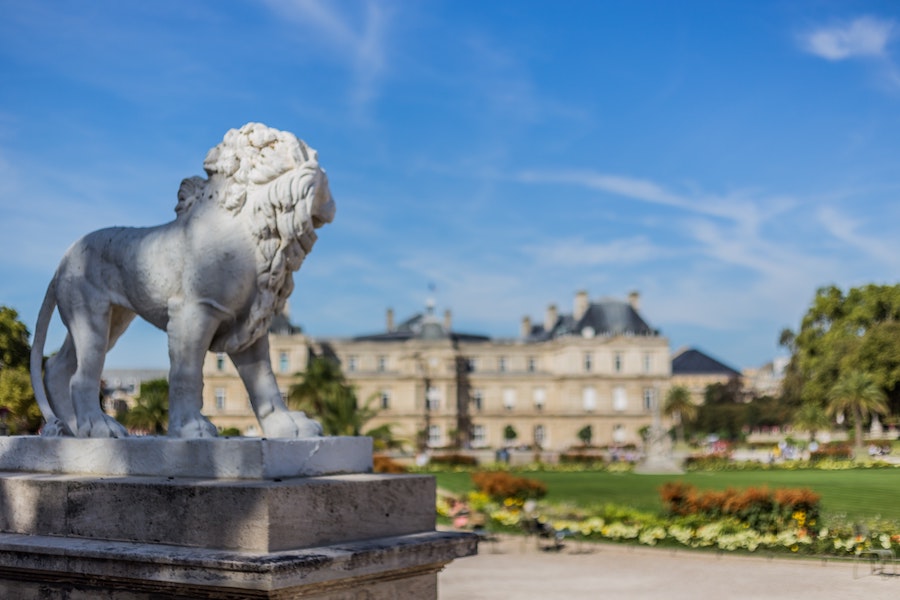
Honors for the biggest garden typically go to the Jardin des Tuileries, but it technically only covers some 55 acres on the other side of the Seine, though several more if you include the adjacent Louvre grounds, which people usually do.
The Luxembourg Gardens are around 60 acres, according to the French Senate, and they should know since they upkeep the gardens. Regardless of which you consider larger — the gardens of the Tuileries or Luxembourg — I’d argue the Luxembourg Gardens make better use of their space with a design that manages to be expansive yet intimate.
This is a place made for locals, though you’ll see plenty of tourists. People come for picnics. They bring their families for the sailboats, puppets, and playground mentioned above. It seems slightly less touristy than the Tuileries Gardens, maybe because it’s not fronting a famous attraction like the Louvre. It’s a stand-alone sight, here for people who enjoy nature and want to soak up beauty. Bring a book, a sketchpad, a baguette and some cheese. Or just settle on one of the many benches for some discreet Parisian people-watching.
8. It’s got a great location near monuments and even more gardens.
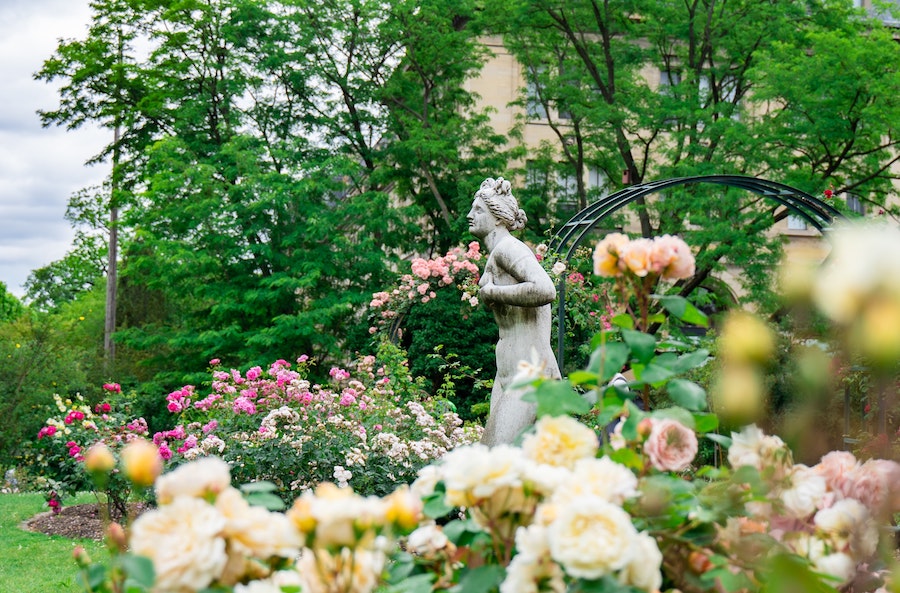
Perhaps this is borrowed beauty, but one of the best things about the Luxembourg Gardens is undoubtedly its prime location. It’s close to landmarks like the Montparnasse Tower, Latin Quarter, Marie Curie’s former laboratory, the catacombs, and the ruins of a Roman amphitheater. Also within walking distance, you can visit Notre Dame, the famous Pont Neuf crossing the Seine, and the Louvre. Down one green alley of the Luxembourg Gardens, you can even catch a view of the Panthéon, the patriotic monument to France’s glory and burial crypt for French legends like Victor Hugo and Voltaire.
But a real garden lover will appreciate how many gardens are nearby. About a mile to the east, you have the Jardin des Plantes, a botanical garden more focused on the variety and collection of different flora than artistic layout but a beautiful greenspace nevertheless. Highlights include the hilltop maze and the hundreds of roses best seen in May and June. You can easily walk from the Luxembourg Gardens to the Jardin des Plantes. There are even a few extra (paid) attractions, like a zoo, greenhouse and several indoor exhibits. Near the entrance, the Grande Mosquée de Paris has gardens, too, smaller and more tranquil.
Head a mile southwest from the Luxembourg Gardens instead and you’ll end up at Montparnasse Cemetery, not a garden in the traditional sense, perhaps, but filled with flowers and monuments and more than a few famous graves.
Just over a mile to the north, across the Seine but still achievable in a 30-minute stroll, is the Tuileries Garden. While you’re there, you might as well check out the Jardin du Palais Royal nearby. It’s a broad lawn bordered by flowers and crowned with a large fountain fronting the 17th-century Palais Royal. Enter the inner courtyard to see columns old and new, both original to the palace and the contemporary (and controversial) Colonnes de Buren installation.
Details to Help With Your Visit to the Luxembourg Gardens
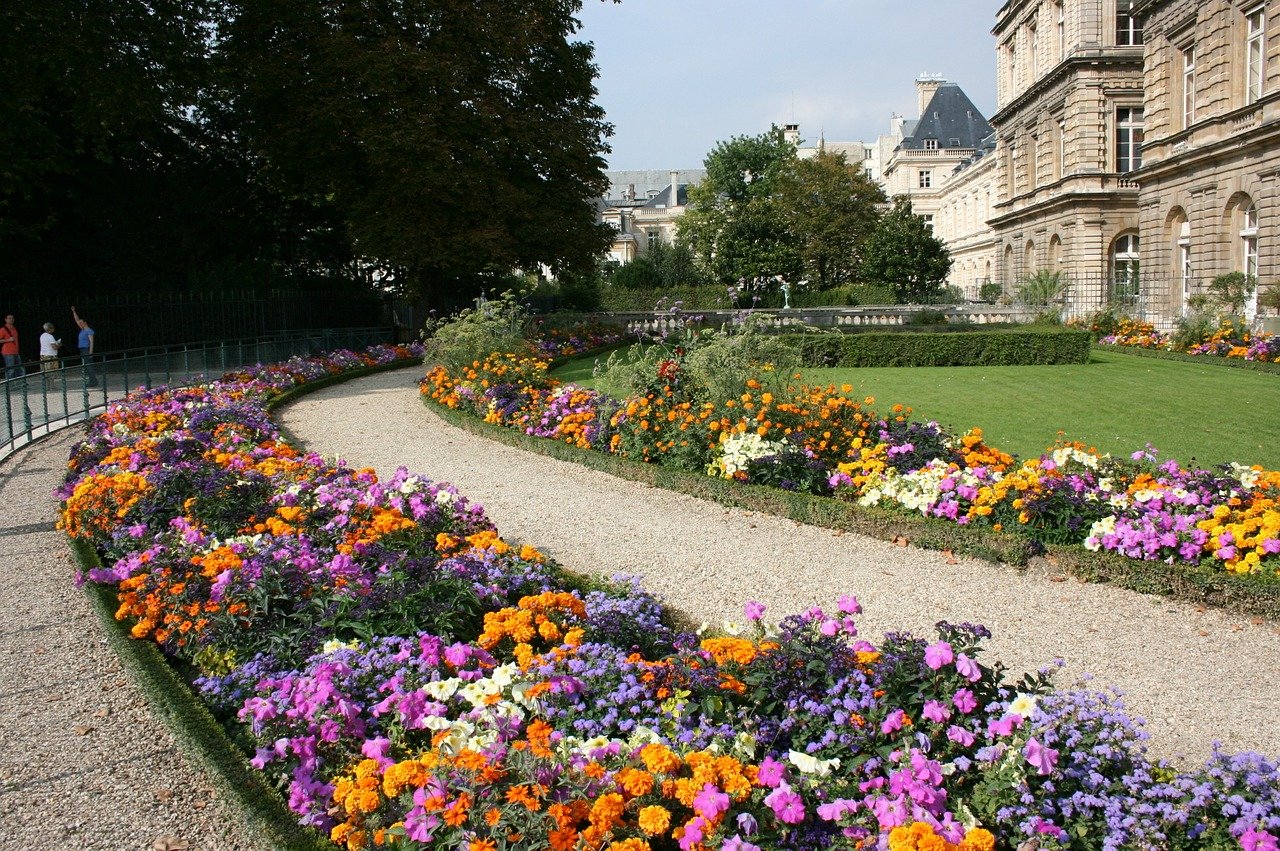
Have I convinced you this garden is the prettiest one in Paris? It has a lot of competition, but if you enjoy parks and gardens (or palaces and puppet shows), the Jardin du Luxembourg is worth a stop while you’re in Paris.
Here are a few answers to common questions to help you with your trip.
Are the Luxembourg Gardens free?
The Luxembourg Gardens are always free to the public. If you want to rent a sailboat or see a puppet show, there will be a fee. There are sometimes free exhibits outdoors as well while the Orangerie and Luxembourg Museum charge for admission.
What should you bring when you visit the Jardin du Luxembourg?
I recommend a camera, of course, and provisions for a picnic so you can plan to take your time. There are plenty of bakeries nearby where you can stop in to pick up the makings of an impromptu sandwich and a selection of pastries for dessert. Check out our guide for tips on how to picnic in Paris.
Do the Luxembourg Gardens close?
The Luxembourg Gardens close beginning at 4:30 p.m. in winter and as late as 9:30 p.m. in summer. The gardens open between 7:30 and 8:15 a.m., depending on the season.
Since the hours are based on sunlight, they vary in 15-minute increments throughout the year. In general, the Luxembourg Gardens’ closing time is 4-5 p.m. November through January and 8-9:30 p.m. April through August. The shoulder seasons fall in between: around 6-7 p.m. The official closing time isn’t a suggestion either. The gardens have tall gates around them, so you can’t just wander in for a moonlit stroll.
The Most Beautiful Garden in Paris
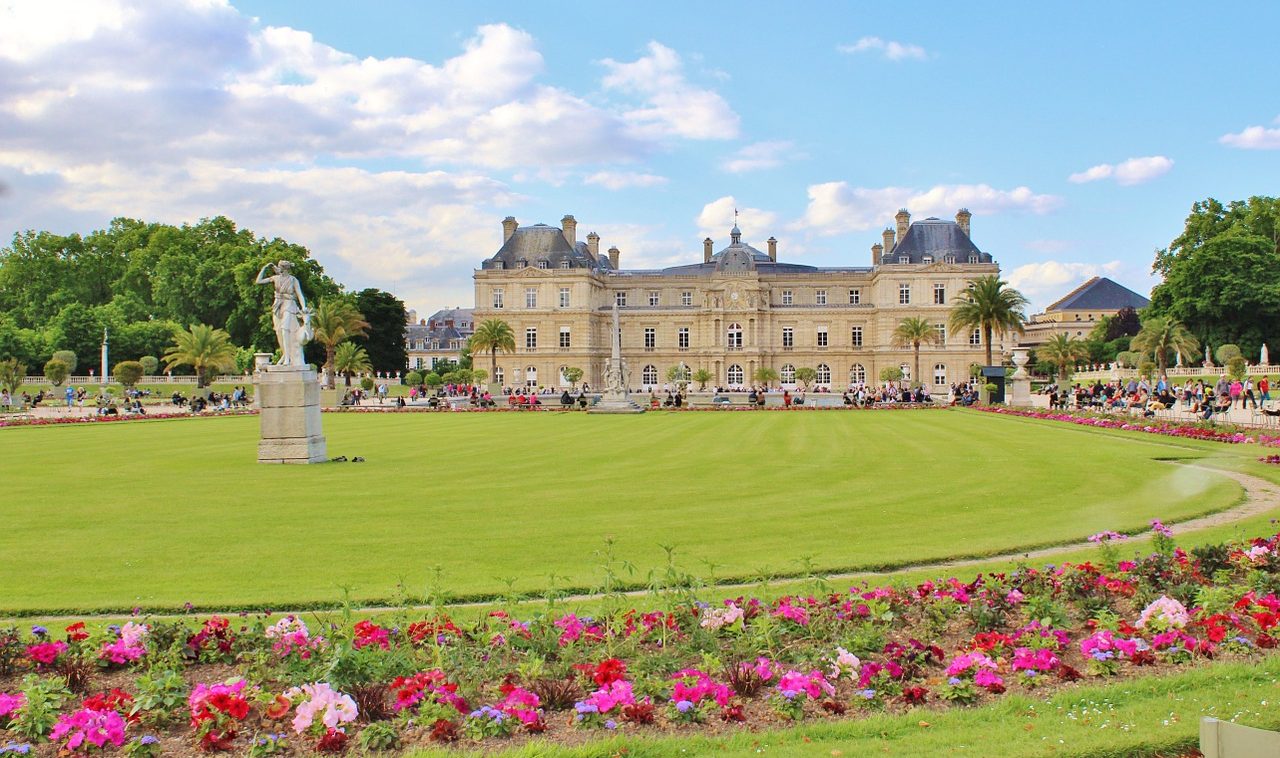
It’s hard to choose a most beautiful garden in a city full of gardens like Paris. What sets the Luxembourg Gardens apart is their design, central location, and unique features, from the well-known Medici Fountain to the pleasant contrast between tiny sailboats and a royal palace.
And with free admission, why not go and decide for yourself if the Luxembourg Gardens are indeed the most beautiful gardens in Paris? At the very least, you’ll walk away with some stellar photos. It’s just another place to add to your bucket list as you explore the best of Paris.